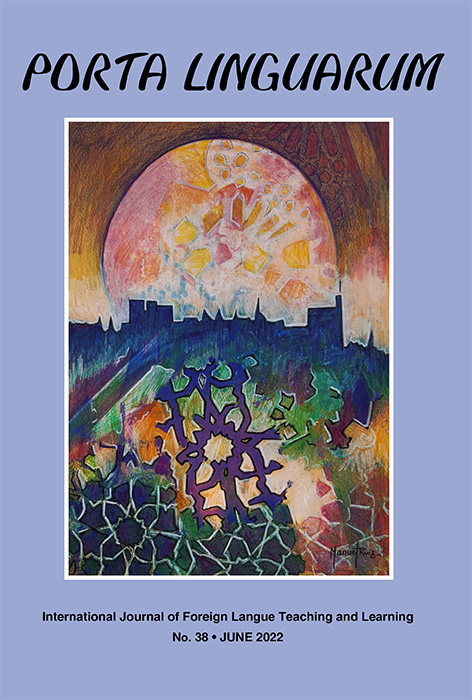Oral corrective feedback in theory and practice. Roothooft, H. (2020). Pamplona, Ediciones Universidad de Navarra, 194 pages, ISBN 978-84-313-3540-3 (e-book 9788431356576)
DOI:
https://doi.org/10.30827/portalin.vi38.23998Keywords:
enseñanza de lenguas, retroalimentación en clase, lenguas extranjerasAbstract
Most foreign language learners wish to communicate without grammar-related misunderstandings and have a wide enough vocabulary to express themselves freely. Teachers, for their part, aim to help them reach this goal. The most important question for this book is whether theoretical approaches and empirical research support the time-old supposition that corrective feedback (CF) - more specifically, oral feedback - promotes advancing towards this objective. The other main question concerns the importance of how and when this feedback is given.
The first chapter of the book constitutes an introduction to the topic, looking at related research questions. It also refers to some of the limited number of studies that investigate peer CF, whereas the rest of the book focuses on teacher CF. Another important part of the introductory chapter is providing a categorization of types of oral CF, based on comment form, and whether they “provide input” or “push for output”. All categories are illustrated with examples and include references to studies that have investigated their effectiveness.
Chapters 2 and 3 provide the background: Chapter 2 discusses the place of oral CF in innatist and cognitive theories of second language acquisition. As can be expected, the arguments for an interactional and constructivist acquisition process prevail over those that oppose correcting learners’ language use. Chapter 3 views the role of oral CF in theories of second language teaching, focusing on the dilemma of whether to put fluency before accuracy or the other way around.
Chapter 4 presents empirical evidence for the effectiveness of oral CF for second language learning. First it views some critical arguments presented in the 1990s that lack adequate empirical evidence; thereafter, an array of studies is presented that do attest to the efficacy of corrective comments during oral communication. The chapter ends with suggestions for further research. Altogether, this empirical chapter accounts for over a half of the book (pages 59-158; references start on p. 173). Perhaps the part that most convincingly states the need for oral CF is one of the final subchapters of the empirical studies that summarizes teachers’ and students’ beliefs about giving and receiving feedback: this is awaited and received with gratitude. Finally, Chapter 5 and the Conclusion revert back to the most important points made in previous chapters and give practical recommendations for teachers who want to give constructive feedback to their students.
Hanne Roothooft’s book provides a most detailed overview of oral corrective feedback and also serves as an introduction to the development of views on second language acquisition during the second half of the 20th century. It gives novice teachers plenty to consider when developing their own teaching philosophy: although it is clear how indispensable immediate oral feedback is in the author’s opinion, plenty of arguments are presented to help others come to their own conclusions.
Downloads
References
Hanne Roothooft’s book provides a most detailed overview of oral corrective feedback and also serves as an introduction to the development of views on second language acquisition during the second half of the 20th century.



















